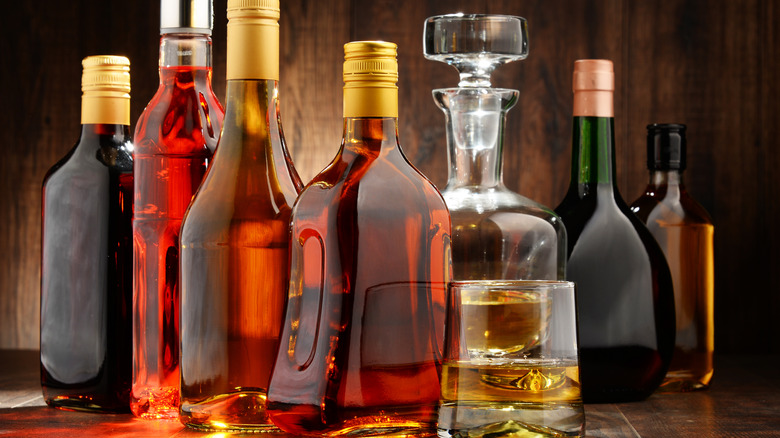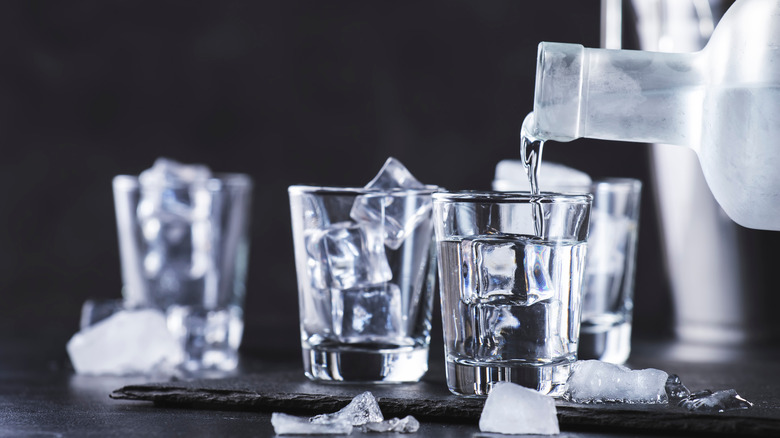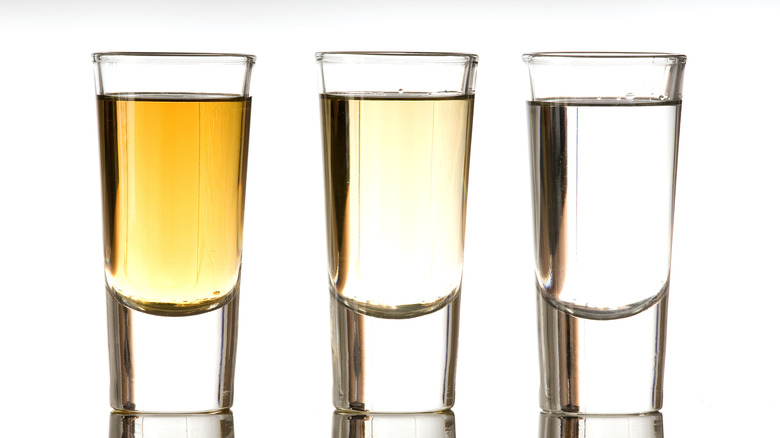Here's How Many Shots Are In A Standard Bottle Of Liquor
From cosmopolitans to the cranberry fizz or classic margarita, when it comes to cocktails, you might not know how many shots are in standard drinks. Similarly, you might have pondered how many shots you can expect to get out of a bottle of booze. Whether you're quaffing from a bottle of tequila, whiskey, or rum, we've got the breakdown for you — but the answer is somewhat more complicated than it first appears.
For the quick facts, you can assume you'll get about 16 full shots out of a 750-milliliter bottle, commonly referred to as a fifth. On the other hand, a half-gallon (otherwise known as a handle due to the grip on the jug) will net you around 39 shots. However, to be accurate about how many shots are in a handle of liquor or another size bottle, we need to define some terminology and the concept of a shot.
What is a standard bottle?
Fortunately, liquor bottle sizes are fairly standardized. However, since there are so many sizes labeled with different measurements, a conversation on the topic can go sideways fairly quickly — especially after sampling the aforementioned bottle's contents. Let's start with small bottles and work our way up. The mini bottles served on an airplane are 50 milliliters (or 1⅞ ounces), while the next size bottle offers 100 milliliters (or 3⅖ ounces). The slightly larger half-pint doubles those amounts to 200 milliliters (or 6⅘ ounces).
Moving up to the pint is a bit of a head-scratcher since it contains 375 milliliters, which is not twice the amount of a half-pint. Then again, it is half the amount of a standard 750-milliliter bottle (25⅖ ounces). Then we jump to a measurement of one liter (33⅘ ounces), 1½ liter (just under 51 ounces), and the half-gallon handle, with a volume of 59⅕ ounces.
What is a shot?
This is where things get murky because some shot glass sizes can vary — even by the slightest bit — and may not always match up with the measurements of something like a cocktail jigger. While the jigger is typically labeled with measurements ½ ounce and 2 ounces, there is no label for "a shot," so it's up to the user to choose the volume. Shot glasses are less dependable than jiggers since they often don't provide measurement markings. For argument's sake, most home and professional bartenders consider a shot to measure between 1¼ and 1½ ounces.
That range leads to some inconsistencies in the math. For example, your standard fifth at 25⅖ oz will provide 20 (and ⅓) measured at 1¼ ounces, while that number drops to 16 with a 1½-ounce pour. This is why you'll sometimes see reports of 17 shots in a standard bottle. However, as we all learned in math class, we must deal with whole numbers, which means we get 16 shots, and someone can fight over a partial one. Cheers to getting through that math lesson!


